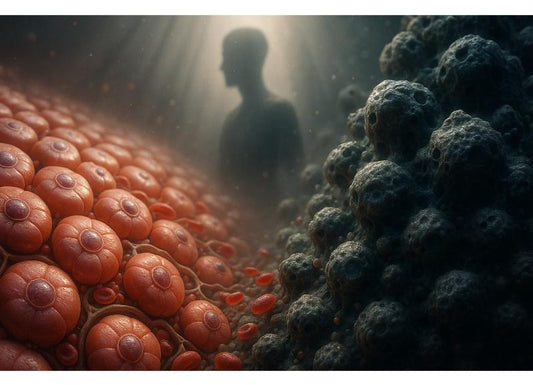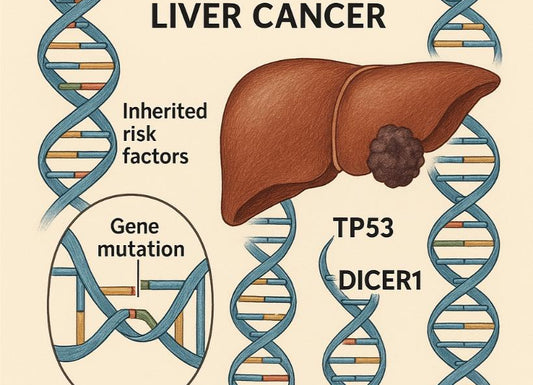Liver Cirrhosis: Foods to Avoid for Better Liver Health
 Written By
Abel Tamirat, MD
Written By
Abel Tamirat, MD

Living with liver cirrhosis means your liver has sustained significant scarring and can no longer function at full capacity. While medical treatment focuses on managing the underlying cause and preventing further damage, dietary changes play an equally important role in protecting your liver and overall health.
Certain foods can worsen inflammation, increase toxin buildup, or strain the liver. Avoiding these helps slow disease progression and reduce symptoms such as bloating, fatigue, and confusion.
This article explains which foods to avoid with liver cirrhosis — and what to eat instead to support recovery.
Why Diet Matters in Cirrhosis
Your liver processes nutrients, removes toxins, and regulates metabolism. In cirrhosis, scar tissue replaces healthy cells, limiting the liver’s ability to filter waste and manage energy balance.
Because of this, food choices directly affect how much work your liver has to do. The goal is to reduce strain, prevent complications, and support regeneration wherever possible.
1. Avoid Alcohol Completely
Even small amounts of alcohol can worsen liver scarring and accelerate liver failure. No level of drinking is safe once cirrhosis has developed.
If alcohol use contributed to your liver damage, abstaining permanently is essential for survival and recovery.
2. Limit Fatty and Fried Foods
Cirrhosis reduces your ability to metabolize fats. Eating greasy or high-fat foods can cause indigestion, bloating, and fat accumulation in the liver.
Avoid:
-
Fried foods (fries, fried chicken, doughnuts).
-
Fast food and takeout meals.
-
High-fat meats (sausages, bacon, ribs).
-
Full-fat dairy (butter, cream, cheese).
Choose instead:
-
Lean proteins (fish, tofu, chicken breast).
-
Healthy fats (olive oil, avocado, nuts in moderation).

3. Cut Down on Salt and Processed Foods
Too much sodium leads to fluid retention, causing swelling in the legs (edema) and abdomen (ascites).
Avoid:
-
Canned soups and sauces.
-
Packaged snacks (chips, pretzels).
-
Processed meats (ham, deli meats, hot dogs).
-
Instant noodles or frozen dinners.
Aim to consume less than 2,000 mg of sodium per day, or as recommended by your doctor. Use herbs, lemon juice, and salt-free seasonings for flavor.
Read on in our overview of the Ribbon Checkup urine test to see how home testing can support your health.
4. Avoid Sugary Foods and Beverages
Cirrhosis often coexists with fatty liver disease or insulin resistance. High sugar intake can worsen these conditions and increase fat buildup in the liver.
Avoid:
-
Sugary sodas and fruit juices.
-
Candy, pastries, and desserts.
-
Sweetened cereals and flavored yogurts.
Choose instead:
-
Whole fruits for natural sweetness.
-
Water or herbal teas.
-
Oatmeal, whole-grain bread, and low-sugar snacks.
5. Limit Red Meat and High-Protein Loads
While protein is necessary for healing, too much animal protein can increase ammonia buildup — especially if cirrhosis affects your liver’s detox ability. This can lead to hepatic encephalopathy, a condition causing confusion or drowsiness.
Avoid:
-
Large portions of beef, pork, or lamb.
-
Organ meats (liver, kidney).
Choose instead:
-
Plant-based proteins (beans, lentils, tofu).
-
White meat (chicken, turkey).
-
Fish rich in omega-3s (salmon, sardines).
6. Avoid Raw or Undercooked Seafood
Raw shellfish (like oysters) may contain bacteria that can cause severe infections in people with liver disease.
Avoid:
-
Raw oysters, clams, and sushi.
-
Undercooked fish or seafood.
Always cook seafood thoroughly to prevent bacterial exposure.
Read on in our full guide to at-home liver tests to learn what your results really mean.
7. Limit Iron and Vitamin A Intake
Too much iron or vitamin A can accumulate in the liver and worsen damage. Avoid supplements unless prescribed.
Avoid:
-
Iron-rich supplements unless directed.
-
Liver or multivitamins containing vitamin A or iron.
Tip: Get your nutrients from food sources instead of over-the-counter supplements.
8. Be Cautious with Herbal Supplements
Some herbs marketed for “liver cleansing” can actually be toxic to the liver.
Avoid:
-
Kava.
-
Comfrey.
-
Pennyroyal.
-
Chaparral.
Always consult your doctor before using herbal products or over-the-counter remedies.
9. Avoid Excessive Caffeine
While moderate coffee intake may benefit the liver, energy drinks and strong coffee can strain the digestive system and worsen dehydration.
Stick to 1–2 cups of coffee daily and avoid caffeinated sodas or pre-workout drinks.
10. Minimize Refined Carbohydrates
White bread, pasta, and pastries can spike blood sugar and promote fat storage.
Avoid:
-
White rice and white bread.
-
Baked goods made from refined flour.
Choose instead:
-
Whole grains like quinoa, brown rice, and barley.
What to Eat Instead

While avoiding harmful foods is essential, eating nourishing, liver-friendly meals supports healing. Include:
-
Fresh vegetables and fruits daily.
-
Whole grains for energy.
-
Lean proteins in moderate portions.
-
Plenty of fluids to prevent dehydration.
Your doctor or dietitian may recommend a low-sodium, high-protein (plant-based) eating plan tailored to your condition.
When to See a Doctor

Contact your healthcare provider if you notice:
-
Persistent fatigue or weakness.
-
Swelling in your legs or abdomen.
-
Yellowing of the skin or eyes.
-
Confusion or memory changes.
-
Sudden weight changes or appetite loss.
Diet changes can help, but they do not replace medical care. Regular checkups and lab tests help track your liver’s function and ensure you’re getting proper nutrition.
Read on to explore our complete guide to at-home kidney function testing and how it works.
The Bottom Line
With liver cirrhosis, your diet becomes part of your treatment. Avoiding alcohol, processed foods, salt, sugar, and red meat helps ease liver strain and prevent complications.
Small daily choices — like eating whole foods, drinking water, and avoiding toxins — can make a big difference in your long-term health and quality of life.
Want to check your liver health from home?
You can take an at-home liver function and nutrition health test through Ribbon Checkup and get results instantly.
Related Resources
-
Liver Pain Location: Understanding Its Causes and Symptoms – Spot the main causes and symptoms.
-
What Can Be Mistaken for Liver Pain? – Conditions that mimic liver discomfort.
-
Gallbladder Pain vs. Liver Pain – How to tell them apart.
References
National Institute of Diabetes and Digestive and Kidney Diseases. (2023, June). Eating, diet, & nutrition for cirrhosis. NIH. https://www.niddk.nih.gov/health-information/liver-disease/cirrhosis/eating-diet-nutrition
Mayo Clinic Staff. (2025, October 29). Cirrhosis self-care and diet. Mayo Clinic. https://www.mayoclinic.org/diseases-conditions/cirrhosis/in-depth/cirrhosis-self-care/art-20588994
McClain, C. J., et al. (2016). Nutrition in patients with cirrhosis. World Journal of Gastroenterology, 22(13), 3053–3065. https://pmc.ncbi.nlm.nih.gov/articles/PMC5114497/
De la Fuente, R. A., et al. (2022). Nutrition and chronic liver disease. Nutrients, 14(12), 2451. https://pmc.ncbi.nlm.nih.gov/articles/PMC9205793/
Amariței, V., et al. (2025). Nutritional management in liver cirrhosis: A combined approach. Diagnostics, 13(9), 278. https://www.mdpi.com/2079-9721/13/9/278
British Liver Trust. (n.d.). Diet and cirrhosis: What to avoid. https://britishlivertrust.org.uk/information-and-support/living-with-a-liver-condition/diet-and-liver-disease/cirrhosis-and-diet/
Verywell Health. (2023, June 25). Liver cirrhosis diet: What to eat and what to avoid. https://www.verywellhealth.com/what-is-the-best-diet-for-cirrhosis-1760062

Dr. Abel Tamirat is a licensed General Practitioner and ECFMG-certified international medical graduate with over three years of experience supporting U.S.-based telehealth and primary care practices. As a freelance medical writer and Virtual Clinical Support Specialist, he blends frontline clinical expertise with a passion for health technology and evidence-based content. He is also a contributor to Continuing Medical Education (CME) programs.



